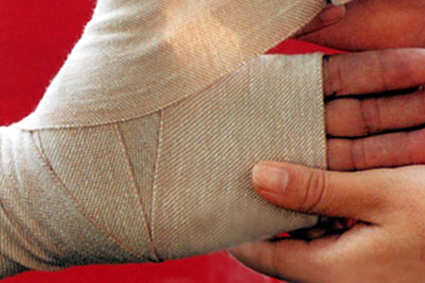You may need to soak the bandage in water before you remove it so it will not stick to your wound. RESULTS Three themes were identified in the analysis.
 Burn Injury Management Tips Woundsource
Burn Injury Management Tips Woundsource
Apply an antibiotic ointment if there is no opening of the skin.

How to care for a burn wound. Soaking the wound in cool water for five minutes or longer taking acetaminophen or ibuprofen for. Dry your hands with a clean towel or paper towel. Try to do this quickly and gently before the area swells.
After cleaning the wound and applying petroleum jelly or a similar ointment cover the skin with an adhesive bandage. Burns should be cleansed initially with a commercial wound cleanser or a gentle soap and water. Use a soft wash cloth or piece of gauze to gently remove old medications.
Pat the area dry gently using a mild clean towel. Apply a small amount of soap to the area and gently move it around. Oedema reduction prevention of burn wound infection and adequate analgesia will also contribute to.
For large scrapes sores burns or persistent redness it may be helpful to use hydrogel or silicone gel sheets. Do not be alarmed if some burnt skin come off with rinsing. Run cool not cold water over the wounded area to reduce pain and swelling.
Clean the burnt area with mild soap and water. The skin and the burn wound should be washed gently with mild soap and rinsed well with tap water. Each interview was based on a protocol of 60 to 90 minutes duration and used a qualitative content analysis.
When handling a minor burn it is important you follow specific steps. Iences in a community setting. Burn Management continued Wound care First aid If the patient arrives at the health facility without first aid having been given drench the burn thoroughly with cool water to prevent further damage and remove all burned clothing.
Rinse the burn in lukewarm water and gently pat it dry with a clean towel. Run your burn under cold water to help cool the skin and reduce any pain. METHODS Using a qualitative descriptive format data were collected by semistructured interview from 10 patients who had sustained major burns.
It may be a simple matter to differentiate between first and second degree burns but it is often more difficult to differentiate between superficial and. DAILY CARE OF THE BURN WOUND The topics in this chapter include. Rinsing the wound under cool water will decrease the temperature and heat trapped in it so that the pain can be minimized.
Your doctor will decide on. Burn wound healing Factors that will enable healing to occur include wound care good nutrition maintenance of function positive attitude and co-operation from the patient. Pat the area dry.
If the burn area is limited immerse the site in cold water for 30 minutes to reduce pain and oedema and to minimize tissue damage. Assess the size and depth of the burn by examining the area clean the burn being careful not to burst any blisters cover the burn with a sterile dressing usually a pad and a gauze bandage to hold it in place offer you pain relief if necessary usually paracetamol or ibuprofen. Use a mild soap and water to cleanse affected area.
Hold the burned area under cool not cold running water or apply a cool wet compress until the pain eases. 1 ongoing distressing symptoms and the. Wash your hands with soap and water.
Thoroughly wash hands using antibacterial soap. Treatments for a first-degree burn include. A general principles of wound care b superficial to mid-dermal burns c deep burns d wound conversion A General Principles of Wound Care There are a number of general rules regarding burn care that must be followed.
Change your bandage daily to keep the wound clean while it heals. Washing your burn with soap and. Remove rings or other tight items from the burned area.
Gently clean the burned area daily with mild soap and water. A small amount of bleeding is common with dressing changes. Treating minor burns.
First cardiopulmonary monitoring should continue during burn care.
